At Glowskinhub.com, we believe beauty isn’t just a look—it’s a feeling
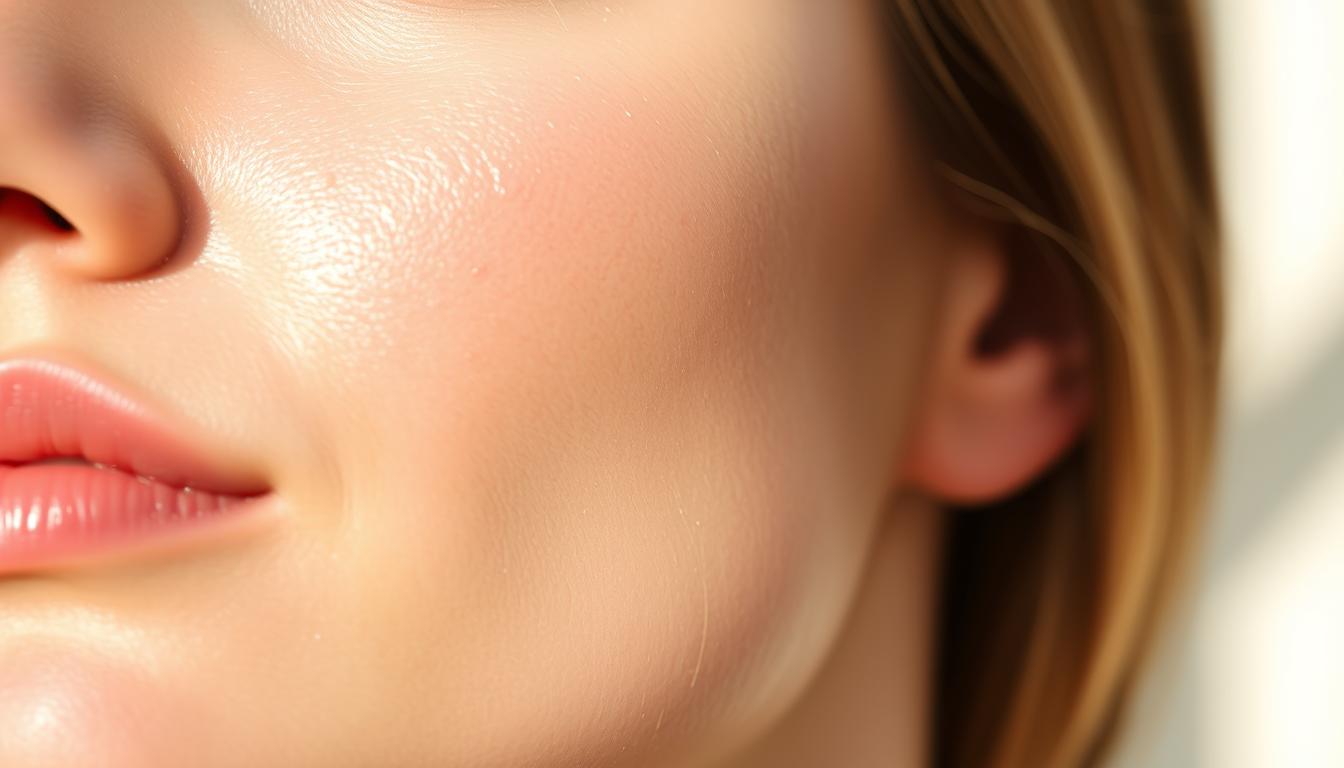
Barrier Rehab After Chemical Peel: What You Need to Know
A chemical peel can be a great way to rejuvenate your Skin, but it’s crucial to take care of it after the treatment. Proper post-peel care is essential for optimal Skin recovery. One critical aspect of this care is barrier rehab, which helps your Skin regain its natural protective layer.
When you undergo a chemical peel, your Skin’s natural barrier is disrupted. This can lead to sensitivity and other complications if not addressed. By focusing on barrier rehab, you can minimize potential issues and ensure your Skin heals properly.
Key Takeaways
- Proper post-peel care is crucial for Skin recovery.
- Barrier rehab helps restore the Skin’s natural protective layer.
- A chemical peel disrupts the Skin’s natural barrier.
- Effective barrier rehab minimizes potential complications.
- Proper care ensures optimal Skin rejuvenation.
Understanding Chemical Peels and Skin Barrier Damage
Understanding how chemical peels work and their effects on the Skin barrier is crucial for maintaining healthy Skin post-treatment. Chemical peels are a popular method for rejuvenating the Skin, but they can temporarily compromise the Skin’s natural barrier.
How Chemical Peels Work on Your Skin
Chemical peels involve applying a solution to remove the top layers of the Skin, revealing smoother Skin underneath. The peel solution typically contains alpha-hydroxy acids (AHAs), beta-hydroxy acids (BHAs), or trichloroacetic acid (TCA), which help in exfoliating the Skin and stimulating collagen production.
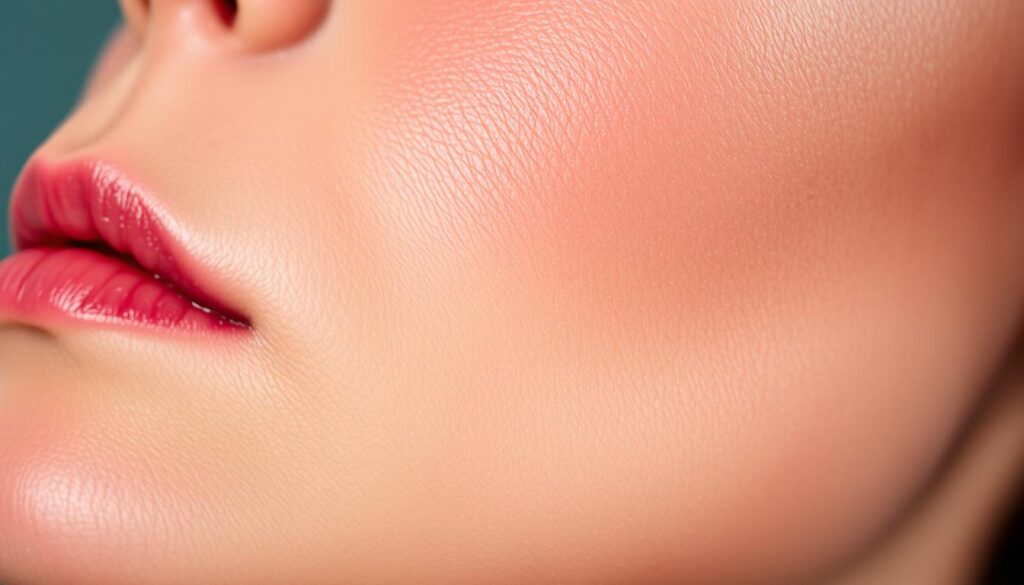
The Skin Barrier: Structure and Function
The Skin barrier, primarily composed of the stratum corneum, plays a vital role in protecting the Skin from external factors like pollution, UV radiation, and dryness. It maintains hydration and prevents moisture loss. The barrier’s structure and function are crucial for overall Skin health.
How Peels Temporarily Compromise Your Barrier
Chemical peels can temporarily disrupt the Skin barrier by removing its top layers, leading to potential barrier damage. This disruption can cause sensitivity, dryness, and increased susceptibility to environmental stressors. Understanding these peel effects is key to managing post-peel care effectively.
By grasping how chemical peels work and their impact on the Skin barrier, individuals can better prepare for the treatment and take necessary steps to support their Skin’s recovery.
Types of Chemical Peels and Their Impact on Skin
Understanding the different types of chemical peels is crucial for achieving desired Skin results. Chemical peels are categorized based on their penetration depth and effect on the Skin, ranging from superficial to deep peels.
Superficial Peels: Gentle Exfoliation
Superficial peels are the mildest form of chemical peels, providing gentle exfoliation. They remove the top layer of dead Skin cells, revealing smoother Skin. These peels are ideal for maintaining Skin health and addressing minor Skin concerns.
Medium Peels: Deeper Penetration
Medium peels penetrate deeper into the Skin, targeting moderate Skin issues such as fine lines and mild discoloration. They contain ingredients like glycolic acid or trichloroacetic acid (TCA), which help in rejuvenating the Skin.
Deep Peels: Significant Barrier Disruption
Deep peels involve the most intense form of exfoliation, using phenol or high-concentration TCA. They significantly disrupt the Skin barrier, requiring longer recovery times. Deep peels are used for severe Skin concerns like deep wrinkles and scars.
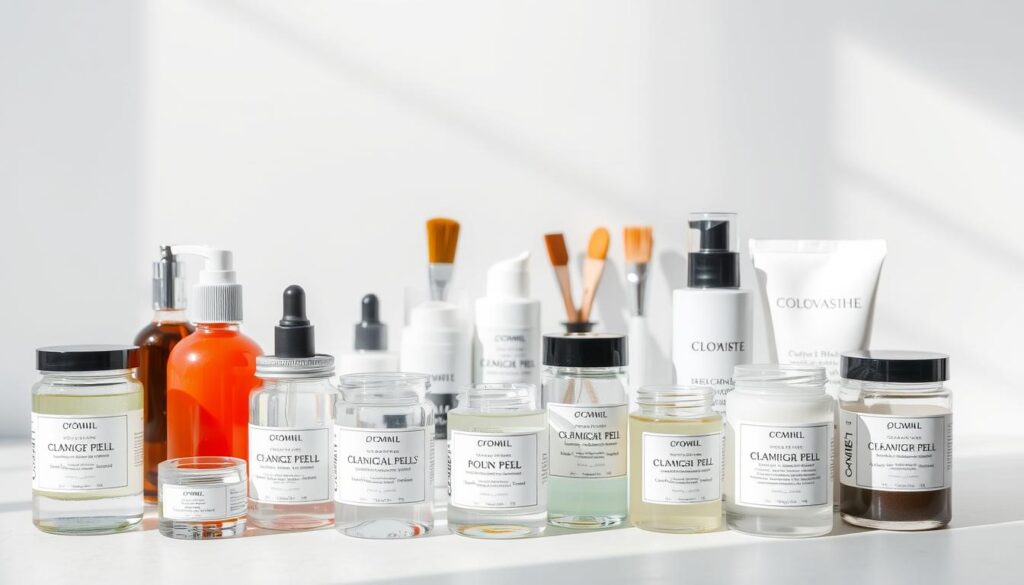
The choice of chemical peel depends on individual Skin concerns and the desired outcome. Understanding the impact of each type on the Skin is essential for a successful treatment.
Barrier Rehab After Chemical Peel: The Complete Process
Rehabilitating your Skin’s barrier after a chemical peel is crucial for optimal recovery and achieving the desired results. A well-structured barrier rehab process helps in restoring the Skin’s natural function, reducing the risk of complications, and enhancing the overall outcome of the treatment.
The Science Behind Barrier Rehabilitation
The Skin’s barrier function is primarily maintained by the stratum corneum, a layer composed of dead Skin cells and lipids. Chemical peels can disrupt this layer, leading to temporary impairment of the barrier function. Barrier rehabilitation involves replenishing and restoring the lipids and other essential components of the stratum corneum.
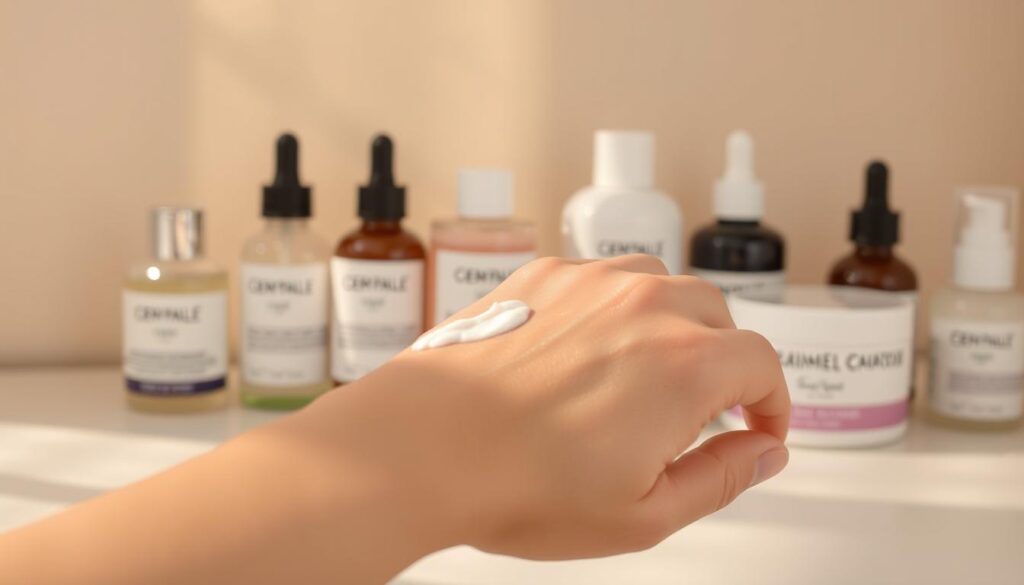
Preventing Post-Peel Complications
To prevent post-peel complications, it’s essential to:
- Keep the Skin moisturized with gentle, hydrating products
- Avoid direct sun exposure and use a broad-spectrum sunscreen
- Refrain from using harsh skincare products or exfoliants
Maximizing Treatment Results
Maximizing treatment results involves a combination of proper post-peel care and maintaining a consistent skincare routine. Using products rich in ceramides, hyaluronic acid, and niacinamide can help support the Skin’s recovery and enhance the overall outcome of the chemical peel.
By understanding and implementing a comprehensive barrier rehab process, you can ensure a smoother recovery and achieve the best possible results from your chemical peel treatment.
Timeline of Skin Recovery After Different Peel Types
Understanding the recovery timeline after a chemical peel is crucial for managing expectations and caring for your Skin post-treatment. The recovery process varies significantly based on the depth of the peel, ranging from superficial to deep peels.
Days 1-3: Immediate Aftermath
Immediately after a chemical peel, the Skin may appear red, tight, and slightly swollen. During the first three days, it’s essential to keep the Skin hydrated and protected from the sun. Gentle cleansing and moisturizing become crucial steps in your daily skincare routine.
Days 4-7: Peeling and Sensitivity
As the Skin starts to peel, it may feel sensitive and look flaky. This is a normal part of the post-peel recovery process. Continue with gentle skincare practices, avoiding harsh products that could irritate the Skin further.
Days 8-14: Barrier Rebuilding
By the second week, the Skin starts to rebuild its natural barrier. It’s still important to maintain hydration and protection. Products containing hyaluronic acid and ceramides can be particularly beneficial during this phase.
Days 15+: Long-term Recovery
After two weeks, most people see significant improvements in their Skin. However, long-term recovery and the final results can take up to a month or more for deeper peels. Continuing a skincare routine that supports Skin health is vital.
The Skin recovery timeline can vary, but with proper care and patience, your Skin will regain its health and vitality. Understanding the different stages of post-peel recovery helps in managing expectations and achieving the best possible outcome.
Essential Products for Post-Peel Barrier Repair
Restoring your Skin’s barrier after a chemical peel involves using a combination of gentle cleansers, hydrating serums, and protective moisturizers. The right products can significantly aid in the recovery process, helping to minimize discomfort and maximize the benefits of the peel.
Gentle Cleansers: What to Look For
When selecting a cleanser for post-peel Skin, it’s crucial to choose a gentle, non-irritating formula. Look for cleansers that are Fragrance-free and contain soothing ingredients like aloe vera or green tea. Avoid harsh exfoliants or astringents that can further irritate the Skin.
Hydrating Serums and Their Benefits
Hydrating serums play a vital role in replenishing moisture and supporting the Skin’s natural barrier function. Ingredients like hyaluronic acid and glycerin are particularly beneficial, as they help to lock in moisture and soothe dryness.
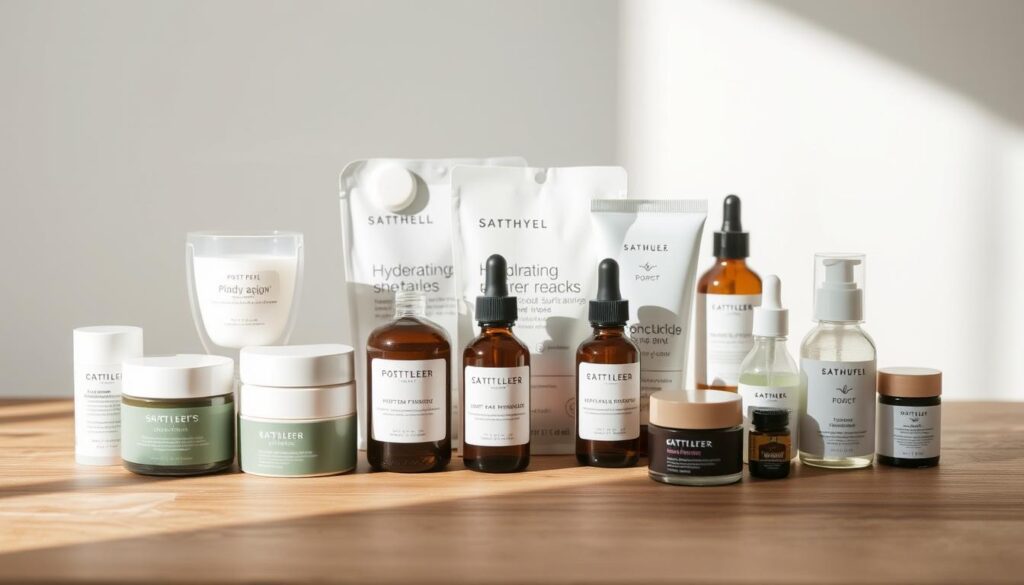
Barrier-Repairing Moisturizers
A barrier-repairing moisturizer is essential for post-peel care. These moisturizers typically contain ingredients like ceramides, niacinamide, or fatty acids that help to restore the Skin’s natural barrier. They provide long-lasting hydration and protection against environmental stressors.
Sunscreen: Your Non-Negotiable Protection
Sunscreen is a critical component of post-peel care. Opt for a broad-spectrum sunscreen with at least SPF 30 and apply it daily, even on cloudy days. Look for physical sunblocks containing zinc oxide or titanium dioxide for optimal protection.
By incorporating these essential products into your post-peel skincare routine, you can support your Skin’s recovery and enjoy the full benefits of your chemical peel treatment.
Key Ingredients for Barrier Rehabilitation
After a chemical peel, your Skin needs specific nutrients to recover and thrive. The right ingredients can significantly enhance the barrier rehabilitation process, leading to healthier and more resilient Skin.
Ceramides: The Barrier’s Building Blocks
Ceramides are essential lipids that play a crucial role in maintaining the Skin’s barrier function. They help to restore the natural lipid bilayer, improving Skin hydration and reducing the risk of irritation. Products rich in ceramides can significantly enhance the barrier rehabilitation process.
Hyaluronic Acid: Hydration Powerhouse
Hyaluronic acid is renowned for its ability to retain moisture, making it an excellent ingredient for post-peel care. It helps to soothe and hydrate the Skin, reducing the appearance of fine lines and wrinkles. Hyaluronic acid serums can provide an intense dose of hydration, supporting the Skin’s natural recovery process.
Niacinamide: The Multi-Tasker
Niacinamide is a versatile ingredient that offers multiple benefits for the Skin. It helps to improve Skin elasticity, reduce inflammation, and enhance the Skin’s barrier function. Niacinamide can also help to minimize the appearance of pores and improve Skin hyperpigmentation.
Centella Asiatica and Other Soothing Botanicals
Centella Asiatica, also known as Gotu Kola, is a botanical extract that has been used for centuries to promote Skin health. It is known for its anti-inflammatory and antioxidant properties, making it an excellent ingredient for soothing and calming the Skin after a chemical peel. Other soothing botanicals, such as aloe vera and green tea, can also provide relief and support the Skin’s recovery.
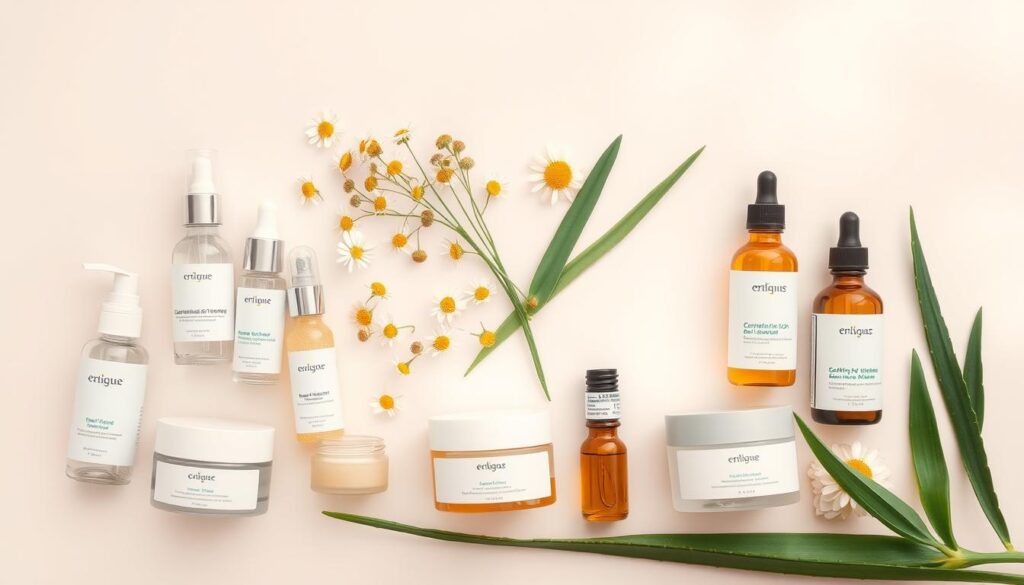
By incorporating these key ingredients into your skincare routine, you can support your Skin’s natural barrier rehabilitation process, leading to healthier and more resilient Skin.
Step-by-Step Barrier Rehab Protocol
To achieve optimal results after a chemical peel, it’s essential to follow a step-by-step barrier rehab protocol. This comprehensive approach ensures that your Skin recovers efficiently and effectively, minimizing potential complications.
Morning Routine for Optimal Recovery
Start your day with a gentle cleansing routine using a Fragrance-free cleanser that won’t strip your Skin of its natural oils. Follow this with a hydrating Serum rich in hyaluronic acid to lock in moisture. Apply a barrier-repairing moisturizer to provide an extra layer of protection and support your Skin’s natural barrier function. Finally, don’t forget to apply a broad-spectrum sunscreen with at least SPF 30 to shield your Skin from UV damage.

Evening Routine for Overnight Repair
In the evening, begin with a gentle cleansing oil to remove dirt and makeup without disrupting your Skin’s fragile barrier. Follow with a soothing toner to help balance your Skin’s pH. Apply a repairing treatment containing ingredients like ceramides or niacinamide to support your Skin’s natural repair processes. Seal everything in with a nourishing night cream to provide intense hydration and support overnight.
Weekly Treatments to Support Healing
Incorporate weekly mask treatments to provide an extra boost to your Skin’s recovery. Look for masks containing soothing ingredients like centella asiatica or aloe vera. You can also consider using a gentle exfoliating treatment once a week to help remove dead Skin cells and promote cell turnover, but be cautious not to over-exfoliate.
By following this step-by-step barrier rehab protocol, you can significantly enhance your Skin’s recovery process after a chemical peel, ensuring a smoother, healthier complexion.
Professional vs. At-Home Barrier Rehabilitation
The journey to restoring your Skin’s natural barrier post-chemical peel can involve either professional interventions or a diligent at-home routine. Both methods have their merits, and understanding their differences is key to making an informed decision.
In-Office Treatments to Accelerate Healing
Professional treatments offer a proactive approach to barrier rehabilitation. In-office procedures such as LED light therapy and micro-needling can significantly accelerate the healing process. These treatments stimulate collagen production, enhance Skin elasticity, and promote the regeneration of the Skin barrier.
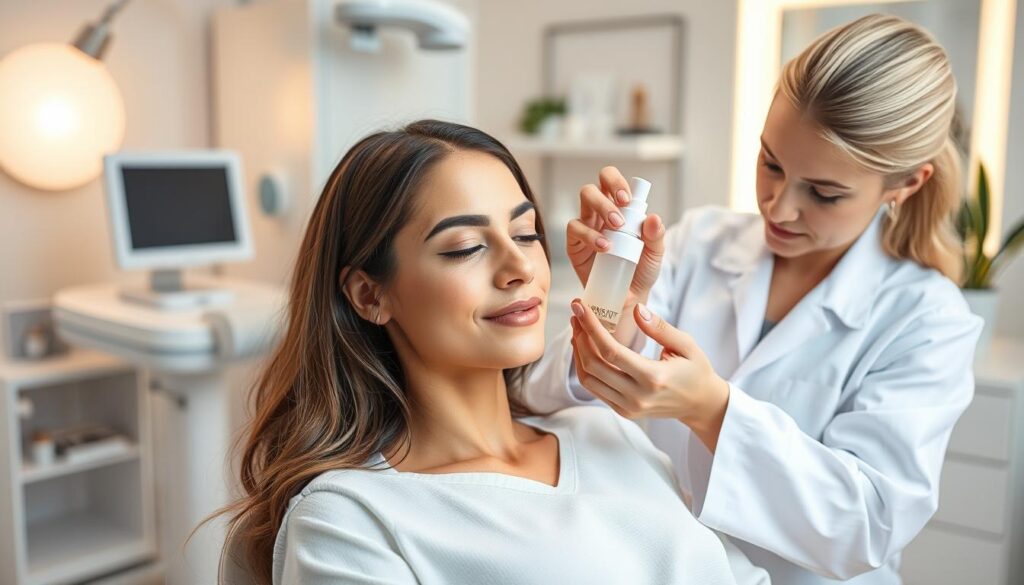
Professional-Grade Products vs. Over-the-Counter Options
The choice between professional-grade products and over-the-counter (OTC) options is crucial in barrier rehabilitation. Professional-grade products typically contain higher concentrations of active ingredients and are formulated to address specific Skin concerns more effectively. While OTC products can be beneficial, they may not offer the same level of efficacy as their professional-grade counterparts.
| Product Type | Concentration of Active Ingredients | Efficacy |
|---|---|---|
| Professional-Grade | Higher | More Effective |
| Over-the-Counter | Lower | Less Effective |
When to Seek Professional Help
While at-home care is essential, there are instances where seeking professional help is advisable. If you experience prolonged redness, increased sensitivity, or signs of infection after a chemical peel, it’s crucial to consult a dermatologist. Professionals can provide personalized guidance, adjust your skincare regimen, and intervene if complications arise.
In conclusion, both professional and at-home barrier rehabilitation methods have their place in post-chemical peel care. By understanding the benefits and limitations of each approach, you can make informed decisions to optimize your Skin’s recovery and maintain its health.
Ingredients and Treatments to Avoid During Recovery
To ensure proper healing and minimize complications, certain ingredients and treatments should be avoided after a chemical peel. During the recovery period, your Skin is particularly vulnerable, and using the wrong products or undergoing certain treatments can lead to irritation, infection, or other adverse effects.
Exfoliants and Actives to Pause
Immediately after a chemical peel, it’s essential to avoid using exfoliants and active ingredients that can further irritate the Skin. This includes products containing alpha-hydroxy acids (AHAs), beta-hydroxy acids (BHAs), retinoids, and physical exfoliants like scrubs or brushes. These ingredients can strip away the Skin’s natural barrier, leading to increased sensitivity and potential complications.
Potential Irritants in Skincare Products
Some skincare products contain potential irritants that can exacerbate post-peel sensitivity. Be cautious of products with fragrances, dyes, or harsh preservatives, as these can cause irritation and allergic reactions. Opt for Fragrance-free, hypoallergenic products instead.
Treatments and Procedures to Postpone
Certain treatments and procedures should be postponed until your Skin has fully recovered from the chemical peel. This includes waxing, tweezing, and other hair removal methods that can cause irritation or ingrown hairs. Additionally, avoid intense pulsed light (IPL) treatments, laser therapy, and microdermabrasion until your dermatologist advises it’s safe to resume these treatments.
Signs of Normal Healing vs. Complications
Understanding the difference between normal healing signs and complications is key to a successful recovery after a chemical peel. As your Skin heals, it’s essential to monitor the progress and identify any potential issues early on.
Expected Post-Peel Symptoms
After a chemical peel, your Skin may exhibit certain symptoms that are considered normal parts of the healing process. These can include redness, sensitivity, and peeling of the Skin. Redness is typically most intense immediately after the treatment and may last for several days. Sensitivity can make your Skin more reactive to products and environmental factors.
To manage these symptoms effectively, it’s crucial to follow a gentle skincare routine and avoid harsh products. Keeping your Skin moisturized is also vital to support the healing process.
Warning Signs That Require Attention
While some discomfort is normal after a chemical peel, there are certain warning signs that indicate potential complications. These include severe redness or swelling that doesn’t improve, signs of infection such as increased pain, pus, or fever, and unusual scarring or changes in Skin pigmentation.
| Symptom | Normal Healing | Potential Complication |
|---|---|---|
| Redness | Mild to moderate, improving over time | Severe, persistent, or worsening |
| Sensitivity | Expected, manageable with gentle care | Extreme, interfering with daily activities |
| Peeling | Some flaking or peeling, resolving within a week | Prolonged or excessive peeling |
When to Contact Your Dermatologist
If you experience any of the warning signs mentioned, or if you’re concerned about your Skin’s healing process, it’s crucial to contact your dermatologist for guidance. They can provide advice on how to manage your symptoms and address any complications promptly.
By being aware of the signs of normal healing and potential complications, you can ensure a smoother recovery and optimal results from your chemical peel treatment.
Conclusion: Maintaining Your Renewed Skin
After completing a chemical peel, maintaining your renewed Skin is crucial for long-term skincare. By following a consistent post-peel maintenance routine, you can ensure your Skin remains healthy and radiant.
To keep your Skin looking its best, continue using gentle, hydrating products that support the Skin’s barrier function. Incorporate products containing ceramides, hyaluronic acid, and niacinamide into your daily routine to maintain Skin health.
Protecting your Skin from the sun is also essential. Use a broad-spectrum sunscreen with at least SPF 30 daily, and reapply every two hours or immediately after swimming or sweating.
By combining a consistent skincare routine with sun protection, you can enjoy your renewed Skin for a longer period. Regular follow-ups with your dermatologist can also help address any concerns and provide personalized guidance on maintaining your Skin’s health.





